Enter through a vast space ruled by the monumental 83-ton statue of Ramses II. Surrounded by the grand staircase lined with statues and sarcophagi, the atrium sets the tone for the drama and scale of what you’re about to explore.
ADDRESS
X4VF+V38, Cairo - Alexandria Desert Rd, Kafr Nassar, Al Haram, Giza Governorate 3513204, Egypt
RECOMMENDED DURATION
5 hours
Timings
09:00–21:00
TICKETS
From $41
NUMBER OF ENTRANCES
2
EXPECTED WAIT TIME - STANDARD
30-60 mins (Peak), 0-30 mins (Off Peak)
The Grand Egyptian Museum spans 500,000 square meters—roughly the size of 70 soccer fields—making it the largest archaeological museum in the world.
GEM’s entire King Tutankhamun collection, over 5,000 artifacts, will be displayed together for the first time since the tomb’s discovery in 1922.
The museum’s entrance features the world’s first suspended obelisk, allowing visitors to view the pharaoh’s cartouche from below through a glass floor.
Here are GEM's main galleries, highlights, and sections that you won’t want to miss:
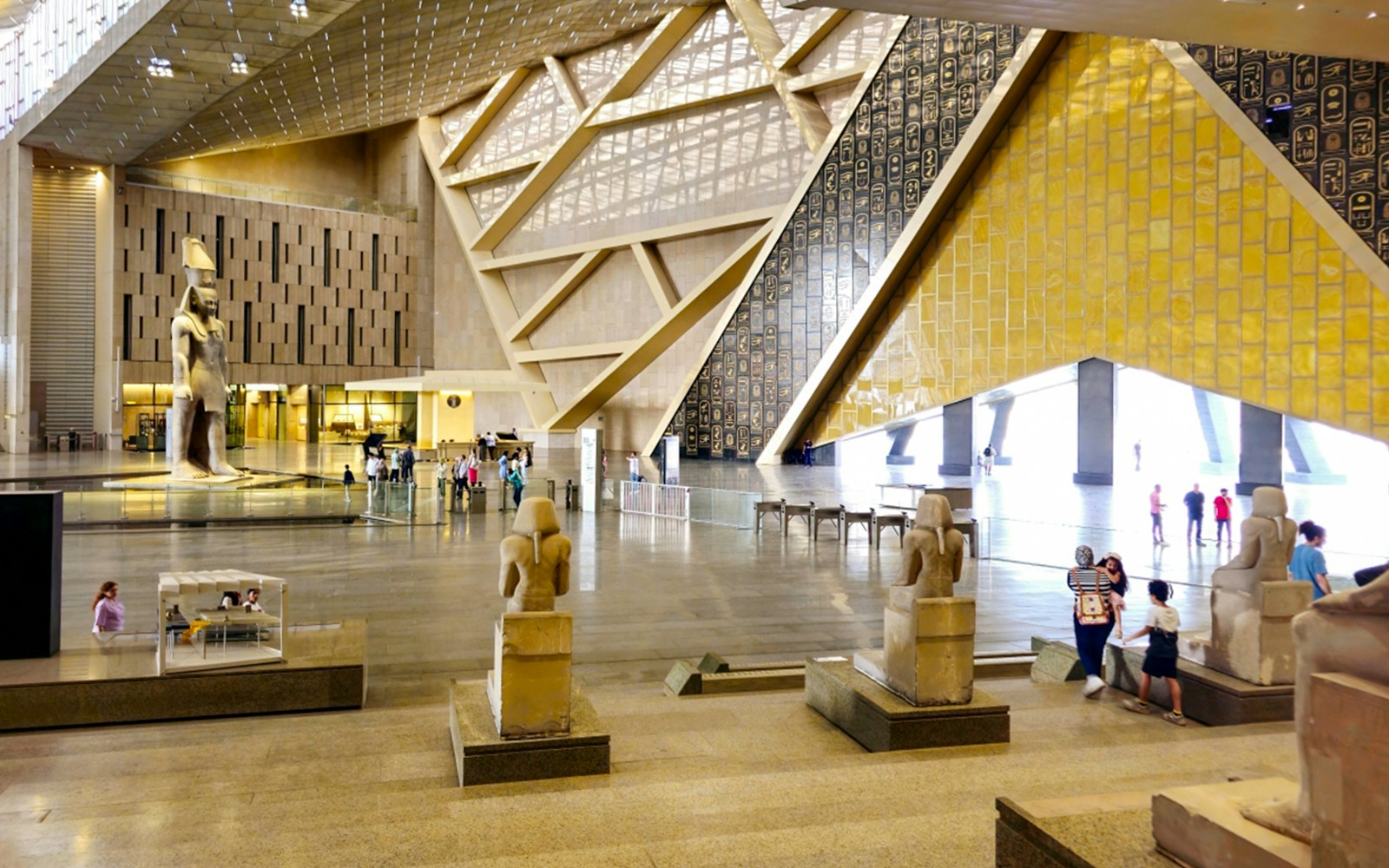
An 83-ton granite statue dominating the atrium, welcoming visitors with the scale and power of Egypt’s greatest pharaoh.
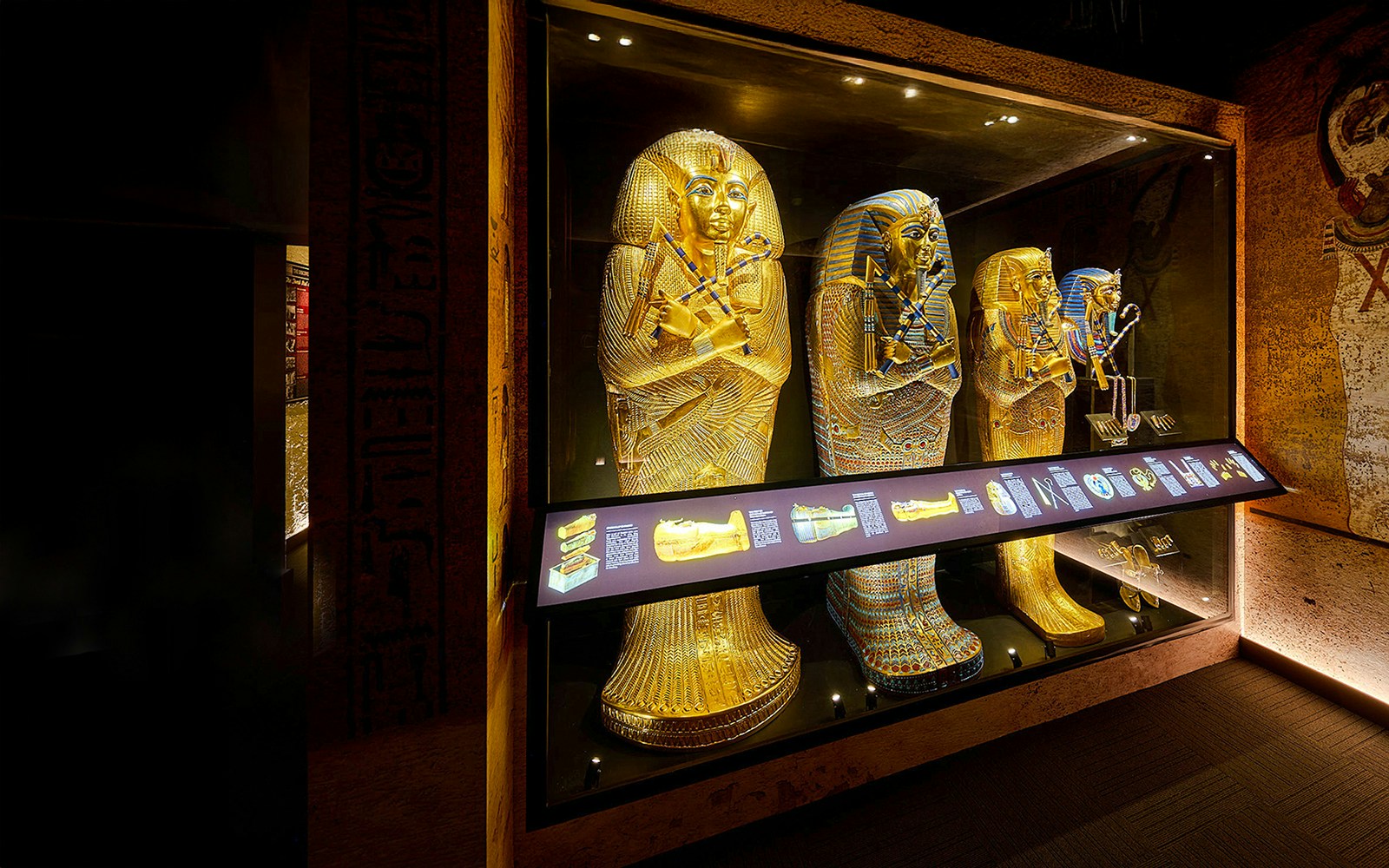
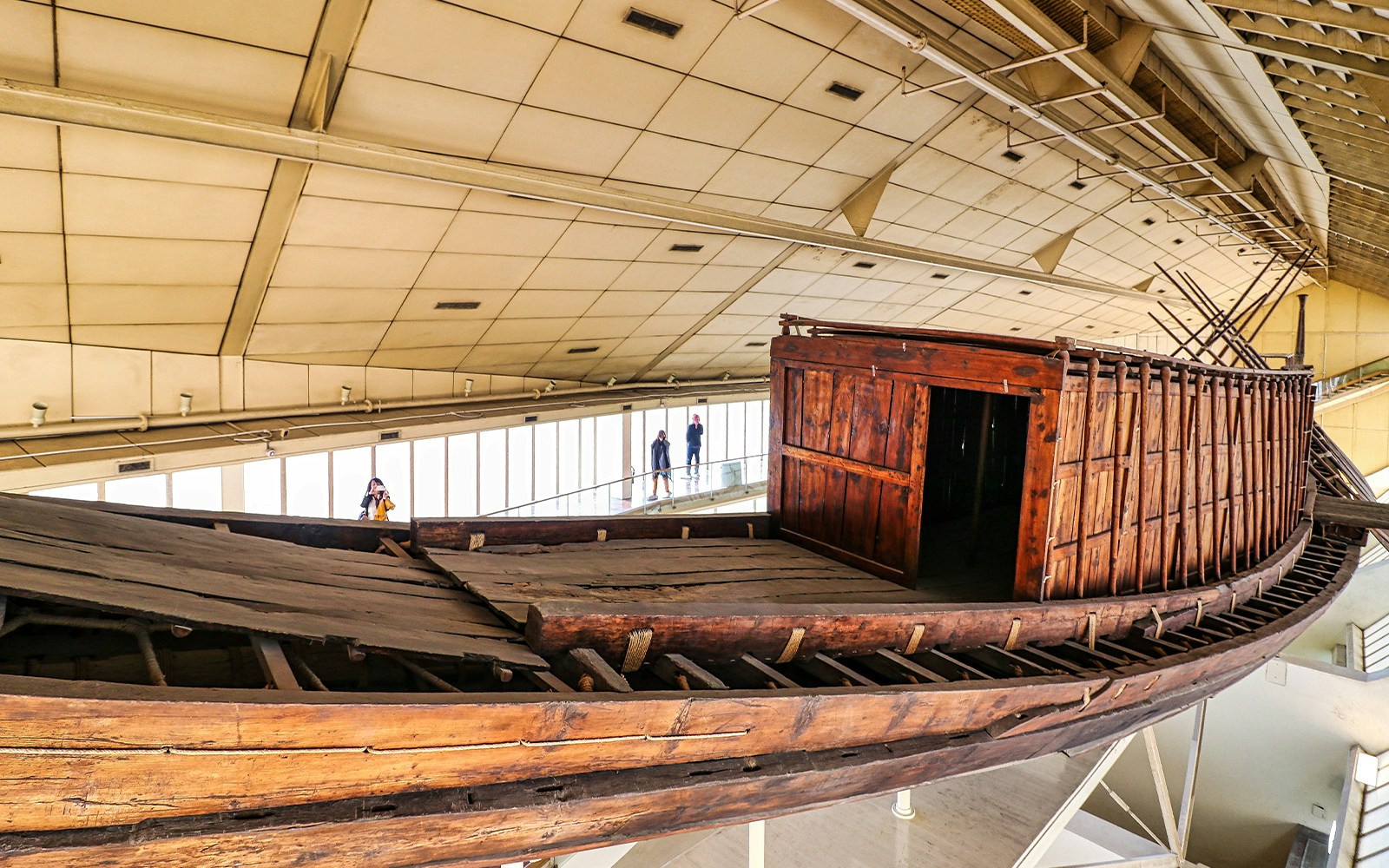
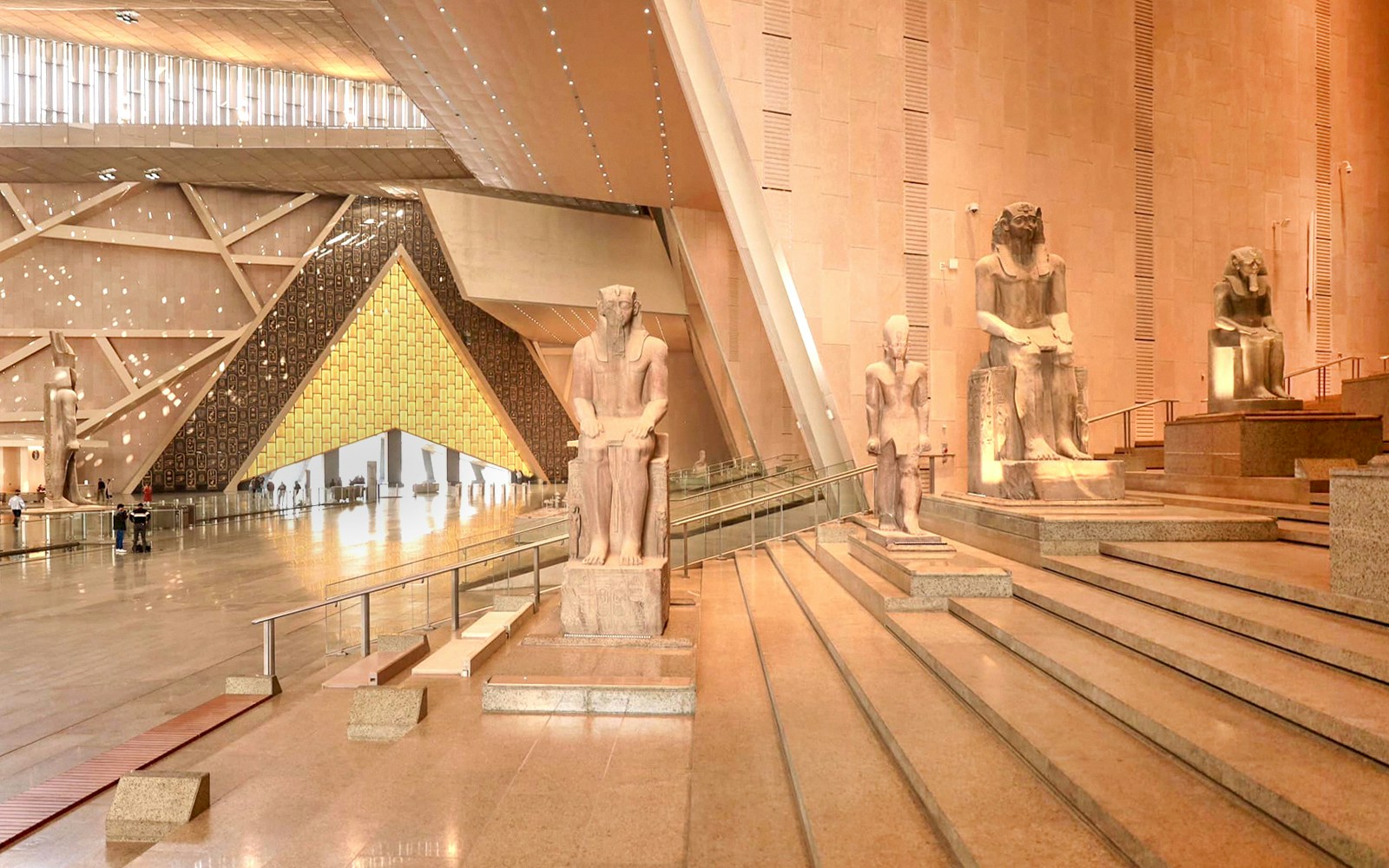
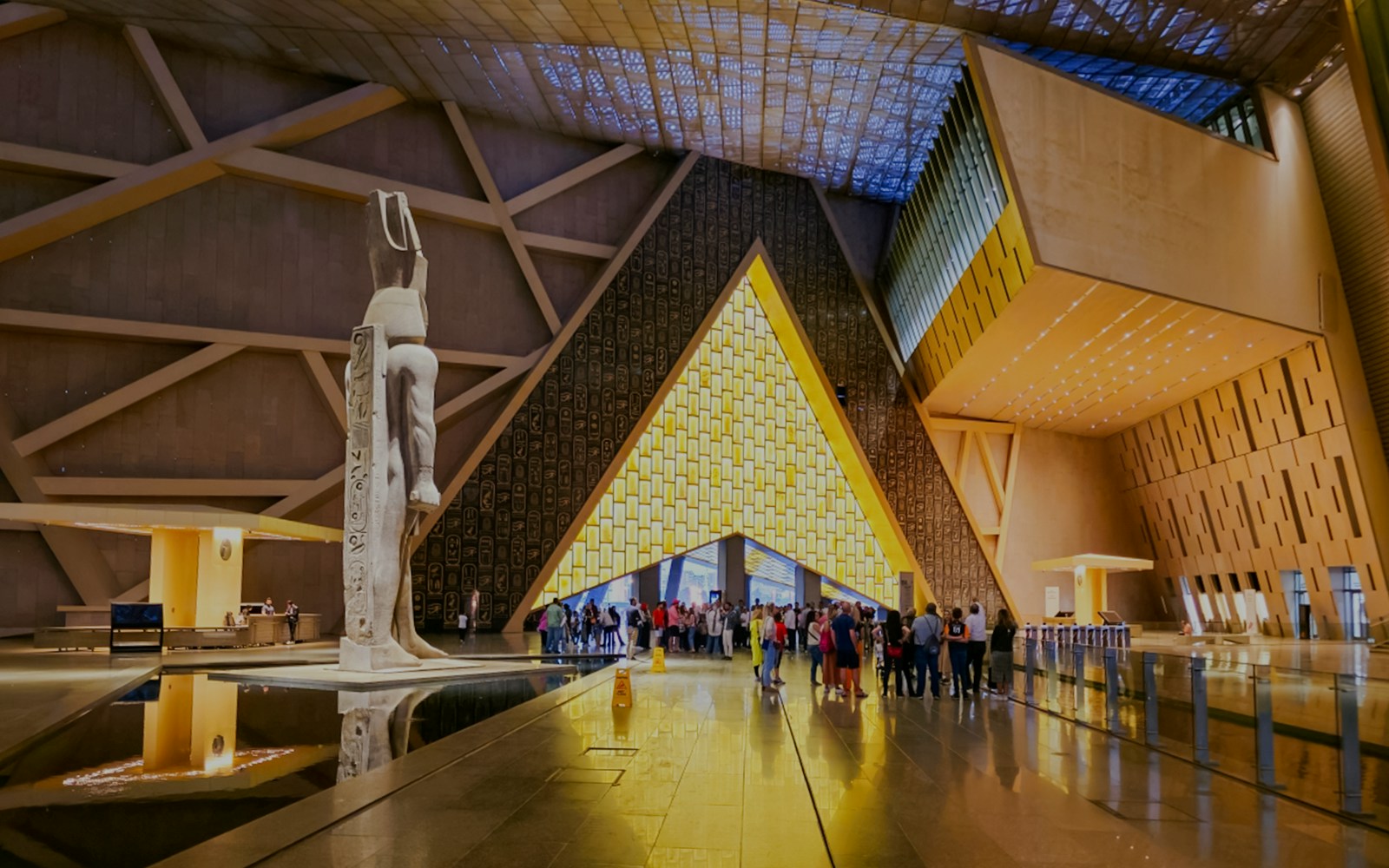
GEM was designed by Heneghan Peng Architects (Irish firm), with structural engineering by Arup and services engineering by Buro Happold. The landscape master plan was by West 8, and the exhibition/museology work was led by Atelier Brückner. The architectural vision combines modern techniques with reverence for ancient Egyptian design — aligning the building with the nearby pyramids, using geometric façades, and designing galleries to reflect chronology and themes.
The ticket counter closes approximately one hour before the museum’s last entry time. Be sure to check GEM’s official site for the exact hours on your visiting day. Read more about timings here.
Yes, GEM operates on most public holidays, though hours may be shortened. It’s wise to verify holiday schedules ahead of time via official resources.
Advance bookings are strongly recommended. Special exhibitions—like the Tutankhamun gallery—and timed entrances can sell out quickly.
Weekday mornings shortly after opening tend to be the quietest. Alternatively, later afternoons (but well before closing) can offer calmer galleries.
Yes. GEM is located about 2 km from the Giza Pyramid complex, and its design includes large windows framing views of the pyramids to connect the indoor exhibits with the outdoor heritage landscape.
Grand Egyptian Museum Skip-the-Line Tickets
Grand Egyptian Museum Guided Tour with Skip-the-Line Tickets & Hotel Transfers
From Cairo: Full-Day Guided Tour of Giza Pyramids, Sphinx, Grand Egyptian Museum & Bazaar with Entry Tickets, Lunch & Hotel Transfers
Combo (Save 5%): Giza Complex Skip-the-Line Entry + Access Inside the Great Pyramid & Grand Egyptian Museum Skip-the-Line Tickets
From Hurghada: Giza Complex & Grand Egyptian Museum Day Trip
Grand Egyptian Museum Skip-the-Line Tickets with Private Hotel Transfers
Combo (Save 10%): Grand Egyptian Museum Skip-the-Line Tickets + Nile Dinner Cruise